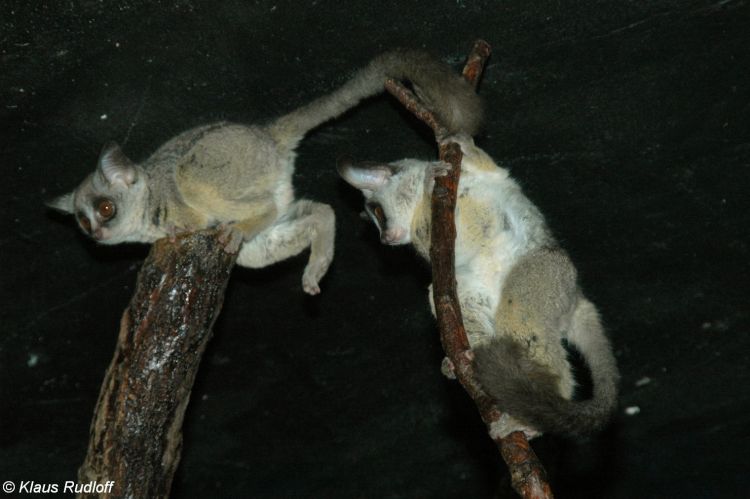How do I love?
One critical aspect of any organism's life is reproduction. If this does not take place, then the organism will go extinct. Here are a few details about the reproduction of the bush baby. Galago senegalensis demonstrates a gametic life cycle, in which it is a multicellular diploid organism for most of its life. Many mammals carry out this type of life cycle, including the giant pandas, giraffes, hippopotami, and cows. and Male and female individuals come together and do sexual intercourse, which usually lasts nine minutes (Gron, 2008). The sperm from the male fertilizes the female’s egg, which produces a diploid zygote that grows by mitosis into a multicellular diploid adult. Bush babies are polygynous breeders (Ballenger, 2001). The males of the species compete for female attention, and for access to multiple female territories. This competition, like that of many creatures, is linked closely to the size of the male. The bigger, the better.
Bush babies demonstrate seasonal breeding. They reproduce twice a year; once at the beginning of rains in November, and once at the end of rains in February (Ballenger, 2001). The male bush babies tend to gain weight and have an increased testes size during and just before the breeding seasons (Gron, 2008). There are many factors, internal and external, that contribute to bush baby mating/reproduction patterns. Photoperiods, availability of mature individuals, hormones, and weather are just a few. The average of sexual reproduction maturity of the female is 240 days old (Ballenger, 2001). For males, it is a tad older, at 300 days. The gestation period ranges from 110-120 days, and only 1-2 offspring are produced at a time (Ballenger, 2001). Galago senegalensis is one of the species of bush baby in which having twins is common (Gron, 2008).
Normally, Galago senegalensis sleep conspecifically, meaning they
sleep with others of their species. As the gestation period of the
female comes to an end, however, the female will start to sleep on her
own (Gron, 2008). Births generally take place in nests found on land
or in tree hollows (Gron, 2008). Offspring usually nurse for about
 three months, even though they can eat solid food by the end of the
first month (Rosenson, 1972). Also, the offspring can begin
maneuvering the tree branches by three weeks (Nash et al, 1989)). Bush
babies only last 3-4 years in the wild, on average. Take a look at the
next tab up above called 'interactions' to learn more about how bush
babies involve themselves with other organisms.
three months, even though they can eat solid food by the end of the
first month (Rosenson, 1972). Also, the offspring can begin
maneuvering the tree branches by three weeks (Nash et al, 1989)). Bush
babies only last 3-4 years in the wild, on average. Take a look at the
next tab up above called 'interactions' to learn more about how bush
babies involve themselves with other organisms.
